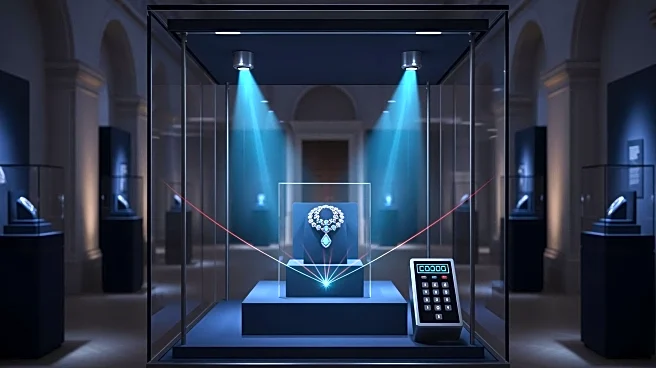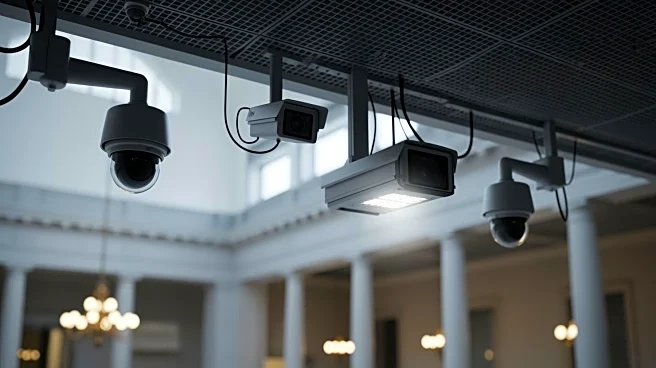What's Happening?
Two suspects involved in the recent Louvre Museum heist have been apprehended by French authorities. The suspects, both in their 30s and residents of Saint-Denis, were arrested while attempting to flee
to Africa. One was detained at Charles de Gaulle Airport en route to Algeria, while the other was captured at his home as he prepared to fly to Mali. The arrests followed a police operation that had been tracking the suspects for several days. Investigators had gathered substantial evidence, including DNA samples and fingerprints, linking the suspects to the crime. The heist, which took place at the Louvre's Apollo Gallery, involved the theft of jewels valued at over $100 million. The suspects' escape plan was foiled by their hasty actions, leaving behind a trail of evidence, including a dropped crown and other items used in the robbery.
Why It's Important?
The arrest of the Louvre heist suspects is significant as it highlights the challenges faced by law enforcement in protecting cultural heritage sites. The incident has raised concerns about security measures at major museums, especially following recent break-ins at other French cultural institutions. The heist has also put pressure on the French government and museum management to enhance security protocols. The successful capture of the suspects, despite their initial escape plan, demonstrates the effectiveness of coordinated police efforts and the importance of forensic evidence in solving high-profile crimes. The case underscores the need for international cooperation in preventing art theft, as the suspects' intended destinations lacked extradition treaties with France.











